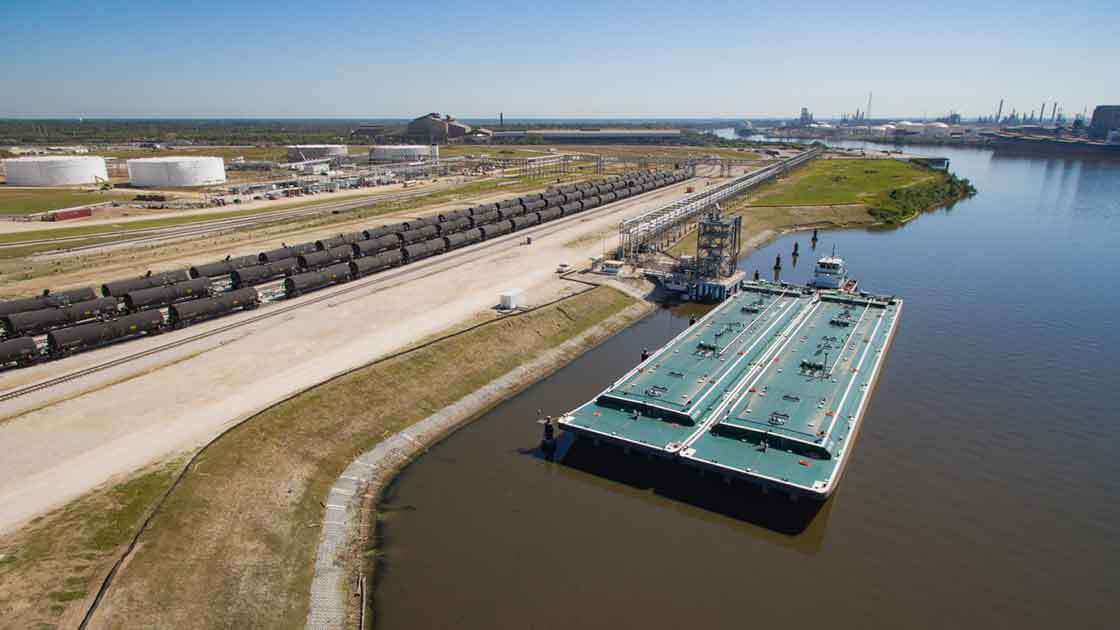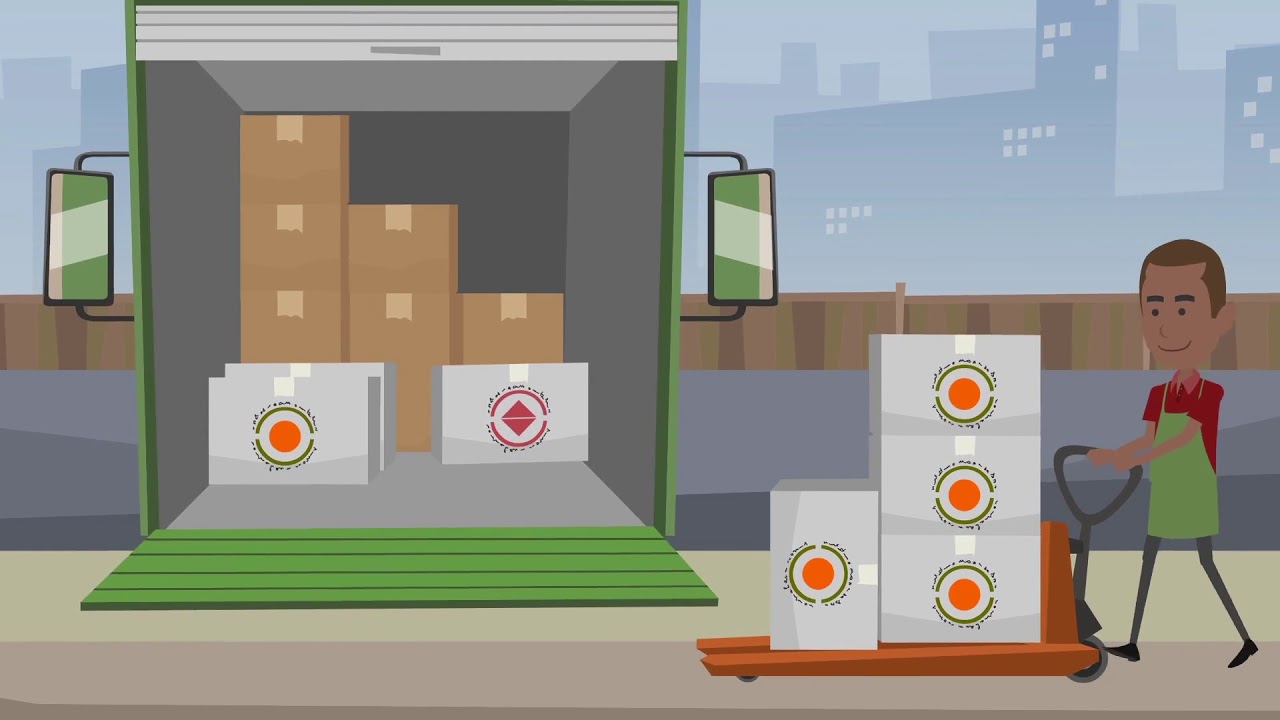The advantages of transloading are profound compared to other shipping methods. Transloading removes the limitations of a single transportation type and opens the doors to multiple shipping options to meet any transport challenges.
Advantages of transloading are seen in the service's ability to adapt to multiple modes of transportation:
- Flexible shipping
- Low environmental footprint
- Cost-effectiveness
- Accessibility
- Adaptable operations
There is also the factor of the tons per mile cost, which is exponentially reduced through rail line use.
Why is transloading such a massive benefit for shipping goods across the country? Why should you jump on the train to save time and money? The article below answers all of your questions.

What is Transloading?

Transloading is a shipping service that utilizes more than one shipping mode. The importance of transloading rests within its flexibility to adapt to specific needs or situations while offering cost savings, transport flexibility, and the transport of larger loads.
Here are just a few examples of scenarios or modes of transportation combinations.
- Truckload and Rail
- Truckload - Rail
- Truckload - Rail - Truckload
- Vessel, Truckload, and Rail
- Vessel - Truckload
- Vessel - Truckload - Rail
- Vessel - Truckload - Rail - Truckload
- Vessel - Rail
- Vessel - Rail - Truckload
- Barge, Truckload, and Rail
- Barge - Truckload
- Barge - Truckload - Rail
- Barge - Truckload - Rail - Truckload
- Barge - Rail
- Barge - Rail - Truckload
Multiple shipping services utilize various shipping modes to transport goods from the origin to a destination location. These three forms of shipping using various modes of transport are as follows:
- 1. Transloading
- 2. Transshipping
- 3. Intermodal shipping
These three modes of shipping are very similar; however, they have subtle differences. If you group these shipping methodologies, intermodal is seen as the foundation for multi-mode transport shipping while transloading and transshipping take it to the next level offering greater flexibility.
For example, let’s take a step-by-step look at a transload journey:
- Goods arrive at an ocean port.
- Goods are then loaded into a truckload shipment and shipped.
- The truckload shipment is then delivered to a transload shipping facility.
- Once the goods arrive, they are sorted and routed to a rail line for shipping.
- Multiple types of rail cars are used to accommodate the goods being shipped.
- Rail cars, flat cars, box cars, or tank cars are utilized when shipping over the rail lines.
- At this point, the goods are delivered at the end of the rail destination or in the event there is no rail access. The goods can then be loaded into another truckload or multiple truckloads so that the goods reach their final destination.
Your container or palletized freight will be loaded on trucks and shipped to a rail line where they are unloaded from the trucks, sorted, and loaded onto rail cars. If there is no available rail access to the final destination, the goods are sorted and loaded onto over-the-road trucks for delivery.

What are the Advantages of Transloading?
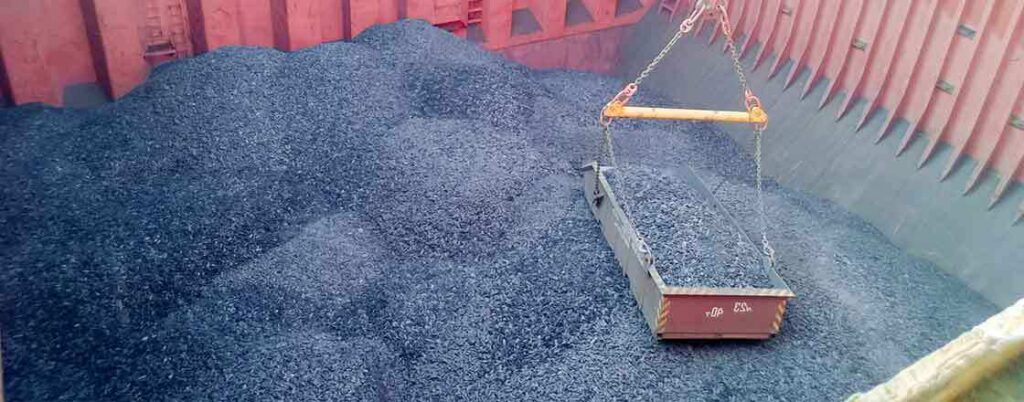
There are numerous ways to ship goods to customers in today's market. Just like the saying goes, "time is money," this phrase perfectly describes why transloading is so important. Leveraging the absolute best in transportation services require speed, efficiency, flexibility, and accuracy. This is where transloading comes into play.
Transloading utilizes multiple modes of transportation to facilitate the fast, efficient, flexible, and accurate shipping of freight or cargo containers. “Transport combinations revolve around truckload, railway, vessel, barges, and even air transport,” said a Transload Services USA expert.
1. Flexibility
The main advantage of transloading is the critical way it moves freight, shipping containers, or loose cargo. This advantage stems from the flexibility and adaptability of the transport service itself. When shipping your goods, they do not simply travel in a straight line over flat land with no obstacles or hazards along the way.
Because of the varied terrain, weather conditions, deadlines, delays, and other real-time events, it is imperative to have the flexibility and also the proper tools at your disposal. Transloading offers services that can adapt to any shipment situation and utilize multiple modes of shipping to take advantage of any scenario.
Transload shipping offers flexibility and efficiency for your goods to navigate any terrain using the fastest and cheapest methods. This shipping service type is a no-brainer for any business that does not wish to waste time and money while avoiding general shipping limitations.
2. Environmental Footprint
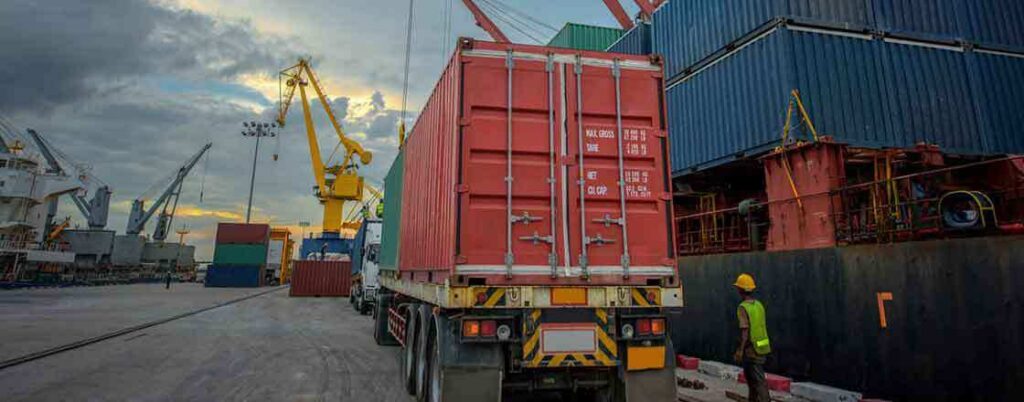
Most people often turn a blind eye to the adverse effects of shipping on the environment and how it can cost us in the long run. That is why it is so crucial that transloading through rail lines has made the environment such a key focus.
While reducing an environmental footprint is not necessarily at the top of most people's list of importance, the rail line industry has come forward with a significant commitment to reducing emissions and taking environmental preservation seriously.
Here are a few examples of specific lead measures outlined by the Association of American Railroads (AAR) that result from rail line shipping's commitment to sustaining the environment.
- Fuel efficiency while reducing carbon emissions
- Elimination of increased over-the-road shipping congestion.
- Loading/unloading cranes that produce zero emissions.
- Advanced technologies that minimize power consumption.
It doesn't matter if rail lines are transloading in the middle of hauling freight or at the rail yard unloading or loading cargo. The industry's hard commitment to reducing the environmental footprint is important. New technologies are consistently deployed to reduce air contaminants, save on fuel use, and eliminate shipping congestion.
While reducing the environmental footprint is not seen as a direct boon to profitability or the bottom line in the short term, it is a commitment to sustainability and long-term growth. It saves the long-term sustainability of businesses and the area the transports travel throughout the country.
3. Cost-Effectiveness
One of the most significant factors with transloading is the reduced shipping cost. Having the flexibility of using multiple modes of transportation can significantly reduce costs. Also, consolidating shipments improves the ability to move goods without being bottlenecked because of transport space.
The cost savings from utilizing a rail line with truckload versus an exclusive set of truckload shipments are extensive. The comparisons are genuinely staggering regarding maximum load sizes and the miles per gallon associated with these shipments.
Calculating the efficiency of your freights shipping is relatively easy. The following example formula will help you better understand how to calculate your tons per mile when transloading. Below is a sample of exactly how to perform this calculation.
Rail line efficiency for every 500 miles traveled equals one gallon of gasoline. The tons per gallon metrics are listed below:
Rail Line Tons Per Gallon
| 3,500 tons of freight | 500 miles of travel | 3,050 gallons of fuel |
| 1,750,000 tons/miles | 3,050 gallons | 574 ton-miles per gallon |
Rail Formula: Freight tonnage x miles of travel/gallons of fuel = ton-miles per gallon
Truckload efficiency for every 500 miles traveled equals 71 gallons of gasoline. The tons per gallon metrics are listed below:
Truckload Tons Per Gallon
| Tons of freight: 20 | Miles of travel: 500 | Gallons of gasoline: 71 |
| 10,000 tons/miles | 71 gallons of gasoline | 141 ton-miles per gallon |
Truckload Formula: Freight tonnage x miles of travel/gallons of fuel = ton-miles per gallon
Compared to truckload shipping, it quickly becomes evident that transloading via rail line is a far greater method for saving short-term and long-term money. The main draw for utilizing a rail line in shipping is the efficiency in gasoline costs.
It is also worth noting that consolidating freight into large single-trip loads via rail lines is a clever play for large shipments. “The ability to utilize multiple rail car types in different configurations to accommodate your freight load is essential,” said a Transload Services USA expert.
If the destination point does not have rail access, loads can be broken down from the rail terminal. Then the freight can get loaded into short-haul less than truckload (LTL) or full truckload (FTL) shipments to accommodate any situation.
4. Accessibility and Versatility in a Supply Chain

In the supply chain, oversized or super heavy containers will often originate at a port. Being restricted to only truckload hinders the ability to move this freight without breaking down the contents first and reloading them into smaller containers to get the goods out of the port.
The accessibility and versatility of transloading allow for the transport of such loads instantly without suffering from delays due to size constraints. The added flexibility of using multiple modes of transportation such as heavy haul transport and multiple rail car types can accommodate and adapt to all situations from start to finish.
When transloading freight increases your ability to reach and expand your business in any market in the country. Through transload services and distribution centers, business becomes more affordable and attainable in all significant markets.
5. Adaptable Logistical Operations

Whether your origin and destination points are in crowded or remote areas, having viable shipping options are critical. Adapting to terrain, weather conditions, delays, or modifications to transported loads is vital to on-time deliveries in a successful supply chain.
“Transloading deploys the right equipment to meet the logistical needs of the load,” a Transload Services USA expert explains. Transloading operations minimize the shipping process and consolidate and preplan effectively to meet the customer's needs. The varied landscapes throughout the United States are no hurdle for transloading services.
Disadvantages of Transloading
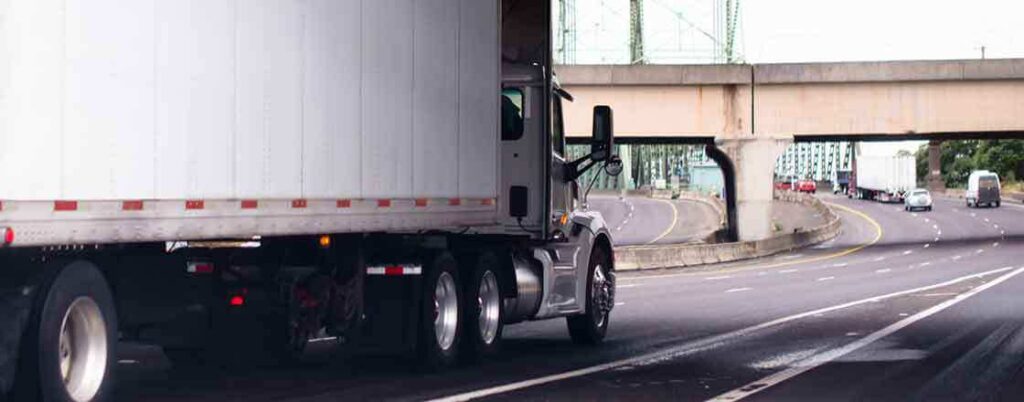
While transloading is an insanely great way to transport goods across the country, and some drawbacks can make transloading less advantageous than it seems on the surface. Key factors determine whether or not transloading is right for you.
Here are a few points whereby transloading may not work for your business:
- The underutilization of containers, whereby container capacity is not maximized.
- Higher than normal damage or theft risks can be associated with short-term storage while cargo changes modes of transportation.
- Potential container shortages can cause delays.
- Expanding the supply chain indirectly can sometimes delay the shipping of goods due to poor management.
The points mentioned above outline various disadvantages when using transloading to ship goods. However, there is a caveat to this topic, the adverse effects of transloading generally affect those whose business or operation is too small for this kind of process.
Furthermore, there are other reasons for a disadvantage that has nothing to do with a business's size, scope, and flow. This disadvantage has to do with factors outside the purview of a company, such as container supply shortages due to the domestic imbalance of available freight containers at the ports and increased risk of damage or theft.

Why are Transloading Services a Necessity for Your Business?
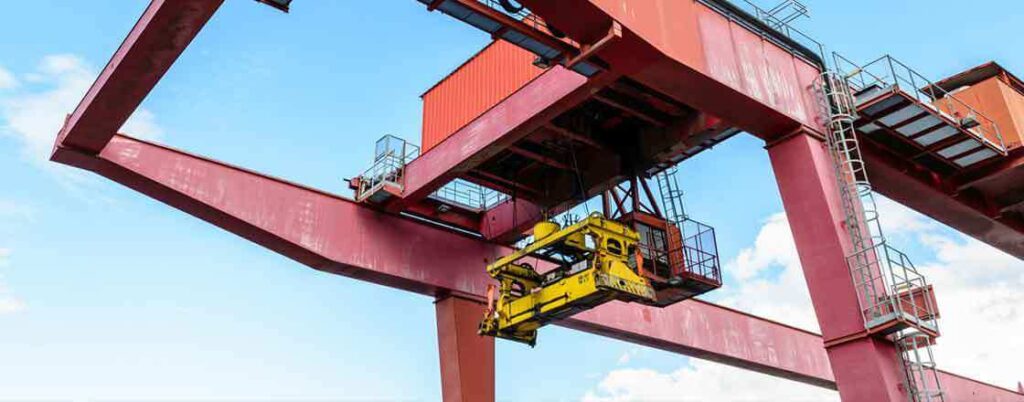
You may ask yourself, "why is transloading something I should consider?” Or, “how can it be a benefit to my business?" The answer to this question is straightforward and clear for any business or supply chain.
Instituting an effective supply chain solution is essential for any business. With transloading, a company will enjoy the following:
- The reduction of terminal or port bottlenecks
- Consolidation of shipments
- Transport time reduction and sustainability
- Less pickup and handling reduces the chance for logistical error
- The lowered overall cost to transport and larger capacity
- Load and equipment adaptability
Transloading is about flexibility, adaptability, seamless integrational application, and most importantly, its ability to save you time and money. In the business world, supply and demand dictate everything, and the ability to meet the supply demands of the market is critical.
Start Transloading Today With Transload Services USA
The flow of goods is priority number one for any business. Getting your goods quickly, safely, and at the best price is imperative for any supply chain. Shipping your freight from start to end with accuracy and speed. At Transload Services USA, our industry experts aim to exceed your needs daily.
Our team of experienced professionals formulates solutions based on individual needs daily. Transload Services USA then puts plans into action that benefit every customer every time. With the assistance of our available resources, you can stay ahead of the competition.
Our full suite of services includes:
Transload Services USA has an answer to keep your business's flow of goods on time and anywhere they are needed. Contact us or call us today at (352) 282-4588 to get your business moving at the speed of light with the accuracy and care you need and deserve.

